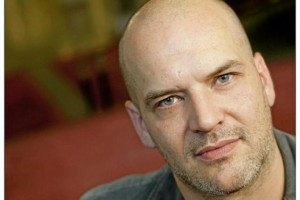 A recital of Lieder set exclusively to poems of Heinrich Heine and composed solely by Schubert and Schumann is particularly apt inasmuch as Heine was born the same year as Schubert (1797) and died the same year as Schumann (1856). He was not only one of Germany’s leading romantic authors, he also wrote about travel, German thought and French politics (he became a staunch liberal, espoused the cause of the French Revolution and spent the last 25 years of his life in Paris). Heine is best remembered for his exquisite lyrics and ballads. His Buch der Lieder (1827) became one of the most popular books of German verse ever published. Nietzsche called Heine “the highest conception of the lyric poet,” and, with no lack of modesty, claimed that “it will one day be said that Heine and I have been by far the first artists of the German language.” In addition to Schubert and Schumann, Mendelssohn, (both Felix and his sister Fanny), Brahms, Wolf, Strauss, Tchaikovsky, Wagner and Orff, among many others, have set his verse to song. Pietro Mascagni, composer of Cavalleria rusticana, made an opera out of Heine’s William Ratcliff.
A recital of Lieder set exclusively to poems of Heinrich Heine and composed solely by Schubert and Schumann is particularly apt inasmuch as Heine was born the same year as Schubert (1797) and died the same year as Schumann (1856). He was not only one of Germany’s leading romantic authors, he also wrote about travel, German thought and French politics (he became a staunch liberal, espoused the cause of the French Revolution and spent the last 25 years of his life in Paris). Heine is best remembered for his exquisite lyrics and ballads. His Buch der Lieder (1827) became one of the most popular books of German verse ever published. Nietzsche called Heine “the highest conception of the lyric poet,” and, with no lack of modesty, claimed that “it will one day be said that Heine and I have been by far the first artists of the German language.” In addition to Schubert and Schumann, Mendelssohn, (both Felix and his sister Fanny), Brahms, Wolf, Strauss, Tchaikovsky, Wagner and Orff, among many others, have set his verse to song. Pietro Mascagni, composer of Cavalleria rusticana, made an opera out of Heine’s William Ratcliff.
Just as Goethe was Schubert’s poet of choice, it was Heine to whom Schumann turned most often for verses to set. Both composers were masters at capturing the psychological atmosphere of each poem, and in both, the piano writing is of utmost importance in defining the mood, which is often extended in the postludes.
Robert Schumann: Liederkreis, Op. 24
Schumann wrote his first songs the year before Schubert died. Schumann was seventeen at the time, and was already deeply under the spell of the older composer. But he wrote no more works in this genre until 1840, his annus mirabilus of song, during which he wrote more than half of his total output of Lieder (nearly 140 out of more than 250), including most of the best as well.
The impetus that gave birth to such a profusion of songs was Clara Wieck, whom he had been courting for years, but with whom marriage had been barred by Clara’s father. Now with legal entanglements out of the way, the future looked bright and rosy, Schumann was in the most buoyant of moods, and he was ready to flex his musical wings in new directions. His abrupt turn from writing exclusively solo piano music to almost exclusively vocal music reflected this turn of events, and he threw himself into his new pursuit with passionate intensity. “Oh Clara,” he wrote, “what bliss to write songs! Too long I have refrained from doing so.… I should like to sing myself to death like a nightingale.”
If Op. 24 is not strictly speaking a cycle in the sense of an identifiable course of events or a continuous story, there is nevertheless a psychological unity of theme and atmosphere in that all the songs are related to love and nature, and the moods expressed therein show the sequence of thoughts toward a final, exuberant flowering of love’s triumph. Schumann dedicated his first Liederkreis to the famous mezzo Pauline Viardot.
Presumably Schumann was inspired to write the cycle’s first song, “Morgens steh’ ich auf und frage” (Each morning I awake and ask …”) by a prolonged absence from Clara. Over the piano’s “walking” accompaniment, the poet sings with scarcely concealed rapture of the joy of seeing his beloved again.
“Es treibt mich hin” (I’m driven this way and that) is another song about separation. Here, the lovers are due to meet in just a few hours, but the pain of waiting is almost unendurable. Frequent, impetuous changes of tempo and dynamics, sometimes in conjunction with unexpected pauses, convey the mental strain on the poet.
“Ich wandelte unter den Bäumen” (I roamed under the trees) is steeped in melancholy and nostalgia. It is framed by a prelude and postlude that perfectly capture the gentle mood of a mid-day reverie.
“Lieb’ Liebchen, leg’s Händchen” (Put your hand on my heart, darling) is surely one of Schumann’s most fascinating. In less than a minute, the composer captures the sinister picture of a carpenter fashioning a coffin for the lovesick poet. The piano part consists only of carpenter’s hammer, tapping steadily on the offbeats with the exception of two startling moments when it “jumps the gun” to articulate words the singer dreads to utter.
“Schöne Wiege meiner Leiden” (Cradle of my sorrows) is the most extended song of the cycle save the last. “Lebe wohl” (Farewell), that favorite cry of the Romantic poets, is heard eight times in the course of the song.
“Warte, warte, wilder Schiffmann” (Wait, wait, wild ferryman) makes its effect less through the vocal line, vigorous though it is, than through the piano writing, which consists mostly of rising scale fragments that dovetail, overlap, and interweave in an almost continuous counterpoint.
“Berg’ und Burgen, schaun herunter” (Mountains and castles look down) is another boat song, this one as tender and gentle as the preceding was spirited. The quiet undulation of the boat on sunlit waves is naturally reflected in the piano part, while the singer delivers four verses which to Schumann evoke only happiness and contentment, despite the evil lurking in Heine’s words.
Schumann borrowed the opening of “Anfangs wollt’ ich fast verzagen” (At first I was almost in despair) from a chorale melody Bach had used in no fewer than six cantatas. Richard Miller suggests that the text’s opening line – “If you earn God’s blessing, then it is every morning new!” – might have been Schumann’s “way of expressing thankfulness about his relationship with Clara.”
The closing song, “Mit Myrten und Rosen” (With myrtle and roses), is in a sense also the prologue to the cycle that immediately followed the Liederkreis, Myrthen (Op. 25), which Schumann had beautifully bound and gilded as a wedding present for his bride (they were married in September). Schumann gives the performance direction innig (heartfelt, sincere and intimate) for the first time in a song, a fitting embellishment for this tribute to the woman he loved so deeply.
Robert Schumann: selected songs
Both Schumann and Heine were admirers of Napoleon. In “Die beiden Grenadiere,” one of Schumann’s most successful excursions into the ballad form, two of Napoleon’s troops are en route home from the disastrous Russian campaign. Bugle calls, drum rolls and weary tramping are all depicted. To the sounds of the Marseillaise, one of them imagines his heroic deeds in defense of Napoleon. But the ballad’s last moments indicate a far different scenario – death.
“Mein Wagen rollet langsam” (My Carriage Rolls Slowly) consists of three connected parts: the poet dreaming of his beloved as his carriage rumbles peacefully over the uneven country road; the intrusion of three mysterious ghosts into the carriage (or is it just into the poet’s mind?); and a piano postlude that occupies more than a third of the song’s length.
“Abends am Strand” (Evening by the Sea) is short but gives the impression of a full-length ballad. Some girls are sitting by a little seaside shack, gazing out at sea. As the evening mists gather and lights come on in the lighthouse, their minds turn to ships and sailors, to storms and shipwrecks, to faraway lands and strange peoples.
“Belsazar” (Belshazzar) constitutes an opus number by itself, a practice Schumann repeated in several other songs of greater-than-normal length. In this miniature drama, King Belshazzar of Babylon feasts in his splendid palace, gets drunk on wine, blasphemes against God, beholds the terrifying fiery writing on the wall, and is slain by his vassals – all events Schumann depicts with changes of texture, dynamics and vocal delivery.
“Der arme Peter” (Poor Peter) is actually three songs in one. They tell of the pitiable Peter watching his beloved (Grete) wed another (Hans), with fatal consequences to the bereft.
From the music alone, “Dein Angesicht” (Your face) would seem to be an expression of blissful love, but its text has an ominous ring: the face of the poet’s beloved is sweet but pale; only the lips are red, and those too will soon be white in death.
“Die Lotosblume” (The Lotus Blossom), from the collection Myrthen, is set to Heine’s allegory of chaste love in the form of a flower floating on a lake. The placid surface of the lake is reflected in the unvarying triplets in the piano, but passion seethes just below the surface in the form of Schumann’s constantly changing harmonic palette.
Another flower song from Myrthen is “Du bist wie eine Blume” (Thou art like a flower). Here too the piano provides a pulsing accompaniment (this time in quadruplets) richly decked out in harmonic splendor. Eric Sams describes Schumann’s paean of praise to his wife Clara as “sumptuously sensual.”
Franz Schubert: six songs from Schwanengesang, D. 957
The fourteen songs collected under the rubric Schwanengesang are among Schubert’s last efforts in the genre, mostly written in the final year of his life. They were assembled by the Viennese editor-publisher Tobias Haslinger in the year after Schubert died. The group comprises seven songs set to texts of Ludwig Rellstab, six to Heinrich Heine and one to Johann Seidl. The Heine songs are the only ones Schubert composed to this poet. To Schubert scholar John Reed, “their mood of bitter irony and tragic alienation is much closer to Winterreise than it is to the Rellstab songs. In a real sense, the Heine songs begin where Winterreise leaves off.”
“Das Fischermädchen” (The Fishermaid) is a deceptively pleasant barcarolle in which the gentle lapping of water on the boat encourages the poet’s false trust in the fishermaid.
“Am Meer” (By the Sea) too is a lover’s lament, full of irony and bitterness.
In “Ihr Bild” (Her Picture), a portrait comes to life to remind the forlorn poet of what he has lost.
“Die Stadt” (The Town) is another water picture, this one describing a weary journey across the lake, accomplished to thoughts of a lost love.
The darkly brooding tragedy “Der Doppelgänger” (The Double), more a declamation than a song, is one of Schubert’s most powerful lyric utterances, rising to a heartrending fff as the poet recognizes his double in the moonlight, grieving outside the home of a long-lost beloved.
And finally, “Der Atlas” plunges us again into a world of spiritual turmoil and suffering. Its portrayal of the weary Atlas bearing the world on his shoulder serves as a metaphor for the heaviness of a lover’s broken heart.
Program notes by Robert Markow, 2012.
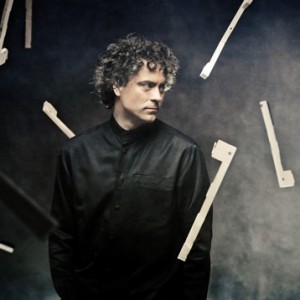 In anticipation and celebration of Paul Lewis’ performance of the Late Schubert Sonatas on October Tuesday, October 23, the VRS is embarking on 23 days of tweets, Facebook and blog posts about the life and work of Franz Schubert and this celebrated interpreter of his music.
In anticipation and celebration of Paul Lewis’ performance of the Late Schubert Sonatas on October Tuesday, October 23, the VRS is embarking on 23 days of tweets, Facebook and blog posts about the life and work of Franz Schubert and this celebrated interpreter of his music.


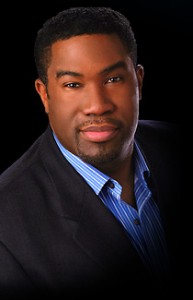
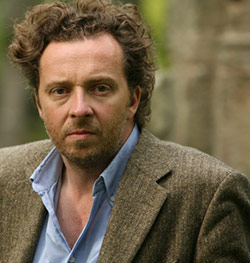
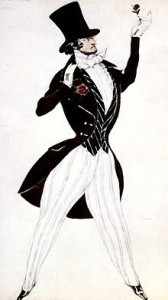
 Thank you for taking time out of your busy schedule. How did the New Year start for you?
Thank you for taking time out of your busy schedule. How did the New Year start for you?